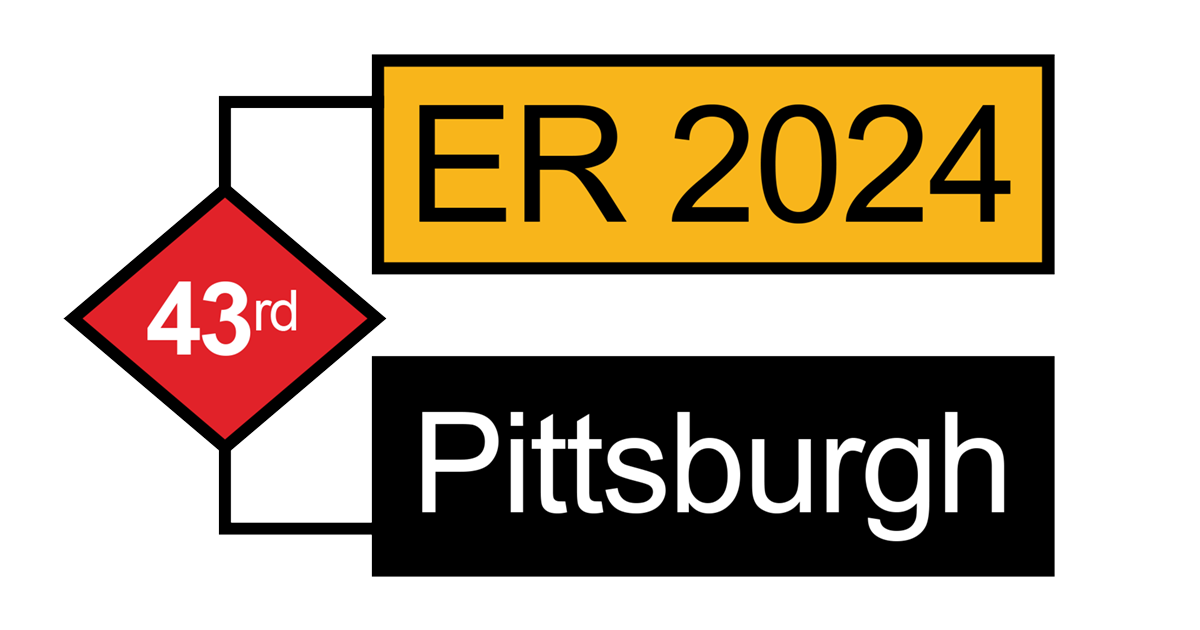Call for Posters & Demos (Closed)
The ER Posters & Demos Session 2024 is intended to showcase work in progress in conceptual modeling, covering any of the conference’s topics. This session will provide an opportunity to present and discuss emerging methods and technologies with researchers and practitioners, allowing the presenters to gather relevant feedback regarding their ongoing work.
Posters should present visionary ideas and/or innovative research projects for which at least some preliminary results are available. We accept works in a relatively early stage, not necessarily including a complete validation.
Tool Demonstrations (Demos for short) refer to the exhibition of innovative software prototypes or full-fledged systems for developing, communicating, and implementing conceptual models. The tools may originate from research initiatives or industry.
Important Dates
All deadlines are 23:59 AoE (Anywhere on Earth)
Poster & Demo Paper Submission
5 August 2024
Extension: 19 August 2024
Author Guidelines
Poster & Demo papers must present original, novel research works and tools or significant extensions of previously presented papers. In the latter case, there must be clear evidence of the value added to the previous version of the work, e.g., by describing the innovative parts and/or application of the work or tool. The volume of accepted papers shall be submitted to CEUR-WS.org for online publication. Papers should be
- Limited to 5 pages.
- Formatted according to CEURART one-column guidelines (templates can be found at http://ceur-ws.org/Vol-XXX/CEURART.zip).
- Submitted in PDF format through the Poster & Tool Demonstration link in the ER 2024 EasyChair page.
Suggested Paper Structure
- Title, authors and affiliation.
- Abstract: a brief description of the work/tool, together with a statement on how the conference participants will benefit from getting to know it and for what target audience it will most likely be of interest.
- Significance to the conceptual modeling field: in the case of posters, describe the novel ideas and how they advance the state of the art in conceptual modeling. Moreover, provide a brief illustration of the work; for demos, describe the innovations of the tool to the ER community and its main features. If applicable, include a brief description of case studies performed using the tool, provide scalability data or pointers indicating where readers can find more information about these case studies.
- Maturity: information illustrating the maturity of the work, including if it has gone through any preliminary evaluation, and if it is already in use.
- Link: if available, a link to a web page where more information of the work is provided; in case of a demo, this could be a link for tool download and instructions of use.
- Screencast: for demos, a link to a screencast demonstrating the tool, preferably including voice – maximum of 20 minutes/video.
Publication and Presentation
All submissions will be reviewed by an international program committee. Accepted papers will be published in proceedings.
Each paper will be presented using a one-minute teaser in a short session, aimed at informing the audience about the available posters & demos. The actual presentation will then be held in one or more separate sessions, in a way that the audience can freely walk around and visit the posters & demos of interest. Therefore, physical presence of at least one presenter for each paper is mandatory.
The reviewing committee and the track audience will vote on the best poster and the best demo to be granted award certificates.
Poster & Demo Chairs
- Sergio de Cesare, University of Westminster, United Kingdom
- Frederik Gailly, Ghent University, Belgium
Program Committee
- João Paulo Almeida, Federal University of Espírito Santo
- Robert Andrei Buchmann, Babeș-Bolyai University of Cluj Napoca
- Dominik Bork, TU Wien
- Paul Johannesson, Royal Institute of Technology
- Tiago Prince Sales, University of Twente
- Claudenir M. Fonseca, University of Twente
- Xavier Oriol, Universitat Politècnica de Catalunya
- Oscar Pastor, Universidad Politécnica de Valencia
- Geert Poels, Ghent University
- Miguel Mira da Silva, Instituto Superior Técnico

